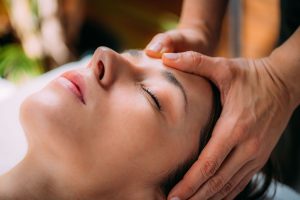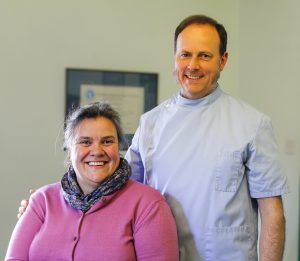- Dorset: 01308 482703
- Clitheroe: 01200 424901
 Cranial or Cranial-Sacral osteopathy is an accepted osteopathic technique used by some practitioners who have undertaken further training in this field. This technique is based, as all osteopathic practices, on a system of clinical diagnosis and manual treatment. A caring approach to the patient and attention to individual needs are particularly important.
Cranial or Cranial-Sacral osteopathy is an accepted osteopathic technique used by some practitioners who have undertaken further training in this field. This technique is based, as all osteopathic practices, on a system of clinical diagnosis and manual treatment. A caring approach to the patient and attention to individual needs are particularly important.
In 1899 William Garner Sutherland observed the potential for movement between the bones of an adult skull (or cranium) which are separate at birth but come together during childhood. At first he tried to prove that such movement was impossible by using bone specimens and then using ingenious mechanical devices designed to compress and hamper any movement in a specific area of the head. Severe reactions both mental and physical demonstrated motion involving the individual cranial bones and also a deep regular pulse throughout the body.
It is this slow pulse or fluid rhythm, which he called the involuntary mechanism, that forms the basis of work in the cranial field. It is an approach that influences not only the cranial mechanics but the fluid dynamics of all the tissues in the body.
An osteopath recognises health to be associated with keeping blood, lymph and cerebo-spinal fluid channels open, allowing the body’s tissues to breathe, absorb nutrients and eliminate waste products. Cranial techniques allow the releasing of tensions in these channels by harnessing the body’s own self-balancing and self-healing powers.
Any part of the body that is restricted, painful or distressed will be reflected by a disturbed quality of the involuntary rhythm. The osteopath will be able to detect this using his/her hands. By using very gentle pressure, the disturbed pattern of movement can be altered.


